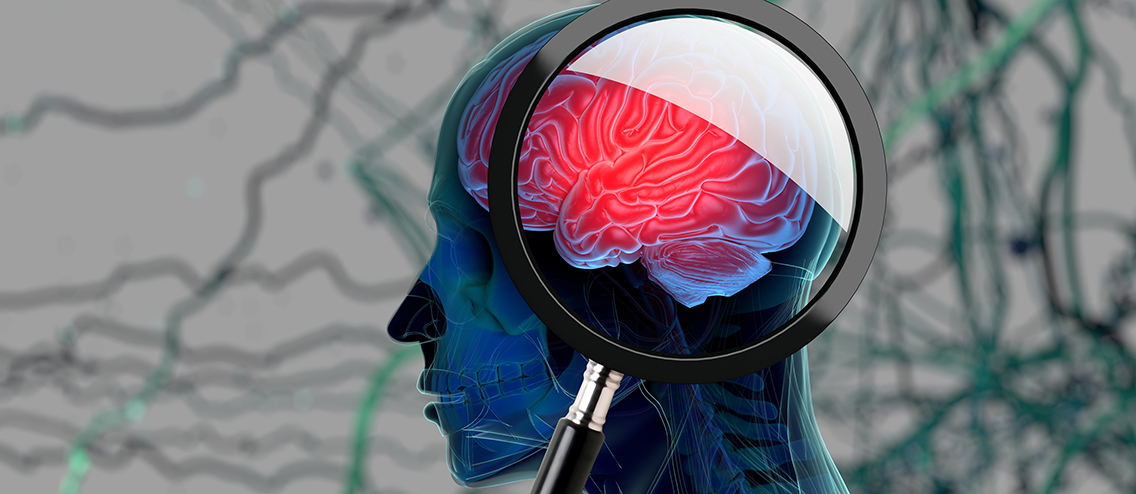In the course of Alzheimer’s disease, the proteins “amyloid” and “tau” accumulate in the brain. A DZNE study with more than 200 participants now provides insights into the interplay of these pathological phenomena. The data suggest that brain tau load impairs memory functions only when amyloid load is also high. These findings therefore support therapeutic approaches aimed at removing amyloid from the brain in early stages of Alzheimer’s disease. A research team led by Prof. Emrah Düzel reports on this in the scientific journal “Brain”.
“It has long been known that deposits of tau proteins in the so-called hippocampus and in neighboring brain areas impair memory. In the case of amyloid, on the other hand, no clear connection to memory performance has yet been found. For this reason, among others, it is debated whether it makes sense at all to address amyloid therapeutically. Our current results suggest that this could actually be helpful for memory function in the early stages of the disease,” says brain researcher Emrah Düzel, spokesperson for the DZNE site in Magdeburg and director of the Institute for Cognitive Neurology and Dementia Research at Otto von Guericke University Magdeburg. “The crucial aspect is that you don’t look at tau alone, but together with amyloid pathology. Here, a linkage becomes clear when you study a larger number of individuals.”
Data collection at multiple sites
The data now evaluated come from a long-term study of the DZNE (DELCODE) in collaboration with university hospitals, in which ten study centers nationwide are participating. The current research incorporated findings from 235 individuals over the age of 60. In addition to cognitively normal adults, this group also included those with memory problems that were either mild (“mild cognitive impairment”) or were only subjectively perceived – i.e., common test procedures could not detect the memory problems. Data from people with dementia were not included because the focus was on early stages of Alzheimer’s disease. Düzel’s team analyzed the cerebrospinal fluid – also known as “nervous fluid” – of the test subjects and examined their memory and brain activity using functional magnetic resonance imaging (fMRI).
The concentrations of amyloid and tau proteins in cerebrospinal fluid are common indicators to assess the burden of these proteins on the brain. Since amyloid and tau proteins are also present in the cerebrospinal fluid of healthy individuals, the subjects were divided into those with pathological, i.e. conspicuous, findings and those with values in the normal range on the basis of established threshold values. For the study of memory using fMRI, the study participants were given the task of remembering photographic images while brain activity in the hippocampus – the control center of memory – was simultaneously recorded. “Using this task fMRI, we found: that hippocampal activation to new images decreased as tau load increased, and so did memory performance, but only when amyloid load was high at the same time. In other words, a high load of both proteins was the likely cause of impaired memory performance,” Düzel said. “This correlation has not been demonstrated in previous studies. The technical harmonization required for this across different study sites is very complex. Such studies require an infrastructure like the one the DZNE has built up over years.”
Backing for anti-amyloid therapies
“Our data show several, relevant correlations. If the amyloid concentration is beyond the pathological threshold, and only then, we see that the higher the tau levels in the neural fluid, the worse the memory performance and the more pronounced the activity losses in the hippocampus,” Düzel continued. “And we also see that when you compare study participants with similar tau data, memory performance is more impaired in those with abnormal amyloid levels than in those with amyloid levels in the normal range.” The causes of the interplay between amyloid and tau pathology are still largely not understood, Düzel admits, but concludes: “Our data show that it might be useful to reduce the tau load if the amyloid load is high at the same time. However, our findings also suggest that it might help to reduce or keep the amyloid load low in the early stage of the disease, even if the tau load remains the same. One can infer from our results that memory might benefit.”
This is where anti-amyloid therapies using “monoclonal antibodies” come in, which are currently undergoing clinical trials and of which the active ingredient “Aducanumab” (brand name: Aduhelm) has been approved for the first time in the USA. However, this is controversial. Says Düzel, “Regardless of how well this particular drug is clinically effective, our study results support the basic concept of containing amyloid. We should continue to pay attention to this approach in therapy development.”
Original publication:
Amyloid pathology but not ApoE4 status is permissive for tau-related hippocampal dysfunction; Emrah Düzel et al; Brain (2022), DOI: 10.1093/brain/awab405; URL:
https://academic.oup.com/brain/article-lookup/doi/10.1093/brain/awab405











